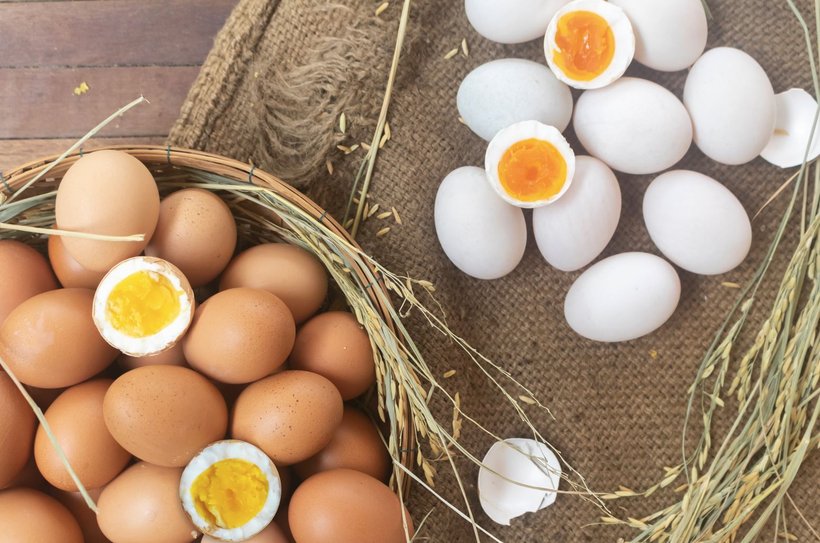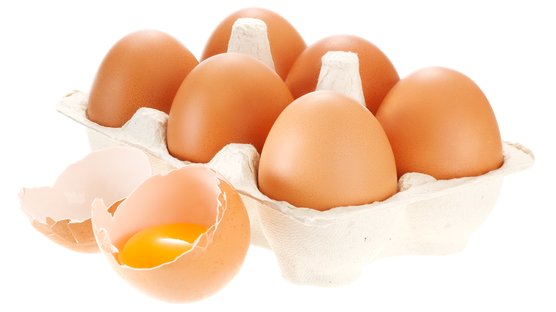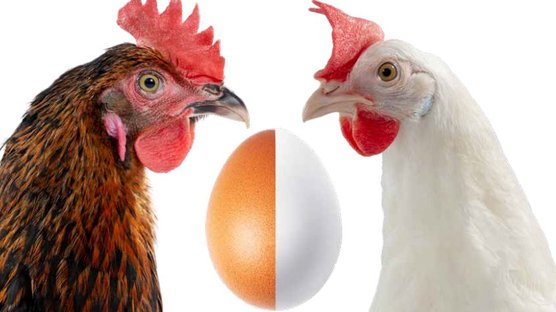
Published on Oct. 23, 2024
Is there a difference in nutrient composition of brown and white eggs?
Eggs are an excellent human protein source worldwide, offering a nutrient-rich option for many diets. It is well known that the nutrient composition of eggs can vary depending on several factors, and can largely be influenced via nutrition, but also via disease. As a poultry genetics company we often receive the question if there is a difference in the nutrient composition of the eggs between our various layer breeds, especially differences between white and brown egg layers. And if so, which one is nutritionally superior to the other?
Nutrient composition: white versus brown shelled eggs from commercial layers
At a fundamental level, white and brown eggs are very similar in terms of nutrient content (Washburn, 1979). Both types of eggs provide essential nutrients such as protein, vitamins, and minerals. Internal research shows no evidence of difference in moisture content (75.6 – 76.3%), protein content (12.2 – 12.8%), fat content (9.1 – 9.3%) or in mineral content. These findings align well with the values reported by the Dutch Nutrition Centre (12% protein and 9.1% fat) (Voedingscentrum, 2024). Although brown-shelled eggs are, on average, 1 gram heavier than white-shelled eggs, the differences in moisture, protein and fat content are minimal and not indicate differences.
For the nutritional composition Hendrix Genetics tested 8 groups of eggs with a total of 58 eggs. The eggs originated from flocks in The Netherlands and France, taken at different ages, containing both white as well as brown flocks. Each comparison between white and brown was taken on the same farm with the same diet and same hatch week. The ages included were 26, 60 and 66 weeks of age. The eggs were samples by two different laboratory, NutriControl in Veghel and Lavetan in Turnhout. The laboratory analysis included analyses on ash, protein, moisture, fiber, sugar, sodium and fatty acids.Influence of environment on nutrient composition
It has long been established that diet has a greater impact on the variation in egg composition compared to chicken breed (Washburn, 1979). External factors significantly affect the nutritional content of eggs, as shown by studies on nutrition (Gao, Qin, Zheng, & Xu, 2024; Doppenberg & van der Aar, 2010) and housing system (Szymanek, Andraszek, Banaszewska, Drabik, & Batkowska, 2019; Rakonjac, et al., 2018). In our investigation, we did not analyze different housing systems, and feed differences primarily resulted in variations in fat content in the eggs. Fat content and fatty acid profiles are relatively easy to adjust through nutrition (Doppenberg & van der Aar, 2010). Therefore, it is possible to obtain omega-3 enriched eggs by feeding laying hens diets higher in omega-3-fatty acids, such as those poultry diets containing flaxseed or fish oil. It is also known that the level and type of minerals, as well as the level of vitamins, can affect their concentrations in the egg (Elnesr, et al., 2024).
Nutritional differences between white and brown eggs
| White eggs | Brown eggs | ||
|---|---|---|---|
| Energy kJ AV | kJ/100g | 558,0 | 572,5 |
| Energy kcal AV | kcal/100g | 133,5 | 137,0 |
| Ash | g/100g | 1,05 | 0,98 |
| Moisture by nmr | g/100g | 76,28 | 75,68 |
| Nitrogen Conversion Factor | --- | 6,25 | 6,25 |
| Protein | g/100g | 12,23 | 12,80 |
| Total Carbohydrate | g/100g | 0,90 | 0,75 |
| Glucose | g/100g | 0,33 | 0,33 |
| Fat by nmr | g/100g | 9,10 | 9,25 |
| Saturated Fatty Acids | g/100g | 3,30 | 3,17 |
| Monounsaturated Fatty Acids | g/100g | 4,23 | 4,45 |
| Polyunsaturated Fatty Acids | g/100g | 1,57 | 1,63 |
| Trans Fatty Acids | g/100g | 0,04 | 0,02 |
| Omega-3 Fatty Acids | g/100g | <0.10 | <0.10 |
| Omega-6 Fatty Acids | g/100g | 1,53 | 1,57 |
| Sodium | mg/100g | 132,2 | 136,0 |
| Sodium expressed as salt | g/100g | 0,33 | 0,34 |
References
- Doppenberg, J., & van der Aar, P. (2010). Facts about fat - a review of the feeding value of fats and oils in feeds for swine and poultry. Wageningen: Wageningen Academic Publishers,.
- Elnesr, S. S., Mahmoud, B. Y., da Silva Pires, P. G., Moraes, P., Elwan, H. A., Ahmed El-Shall, N., . . . Alagawany, M. (2024). Trace Minerals in Laying Hen Diets and Their Efects on Egg Quality. Biological Trace Element Research.
- Gao, Z., Qin, Y., Zheng, J., & Xu, G. (2024). Effects of the Oil and Fat Feeding Period on the Nutritional Composition and Functional Properties of Eggs. Agriculture , 14(2).
- Lešić, T., Krešić, G., Cvetnić, L., Petrović, M., & Pleadin, J. (2017). The influence of hen age on fatty acid composition of commercial eggs. Croatian journal of food science and technology, 9(2), 158-167.
- Rakonjac, S., Bogosavljević-Bošković, S., Škrbić, Z., Lukić, M., Dosković, V., Petričević, V., & Petrović, M. D. (2018). Quality and chemical composition of eggs affected by rearing system and hen's age. Biotechnology in Animal Husbandry, 34(3), 335-344.
- Szymanek, E., Andraszek, K., Banaszewska, D., Drabik, K., & Batkowska, J. (2019). Content of selected inorganic compounds in the eggs of hens kept in two different systems: organic and battery cage. Archives Animal Breeding, 62, 431-436.
- Voedingscentrum. (2024). Eieren. From https://www.voedingscentrum.nl/encyclopedie/eieren.aspx
- Washburn, K. (1979). Genetic variation in the chemical composition of the egg. Poultry Science, 58, 529-535.




